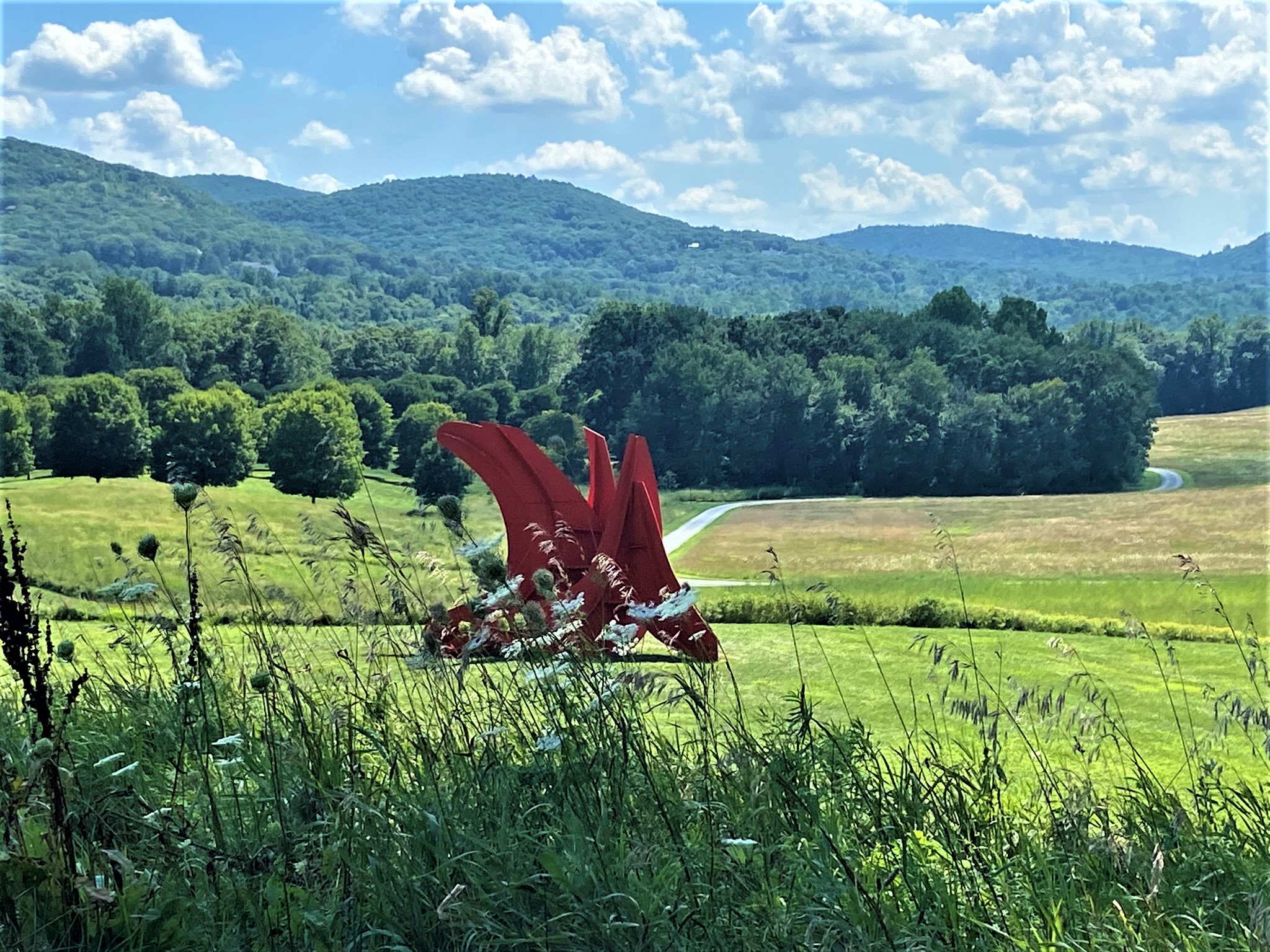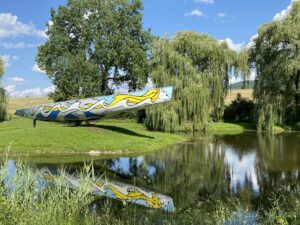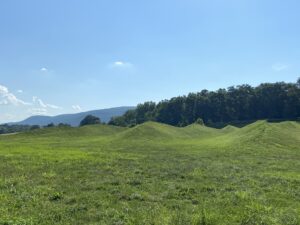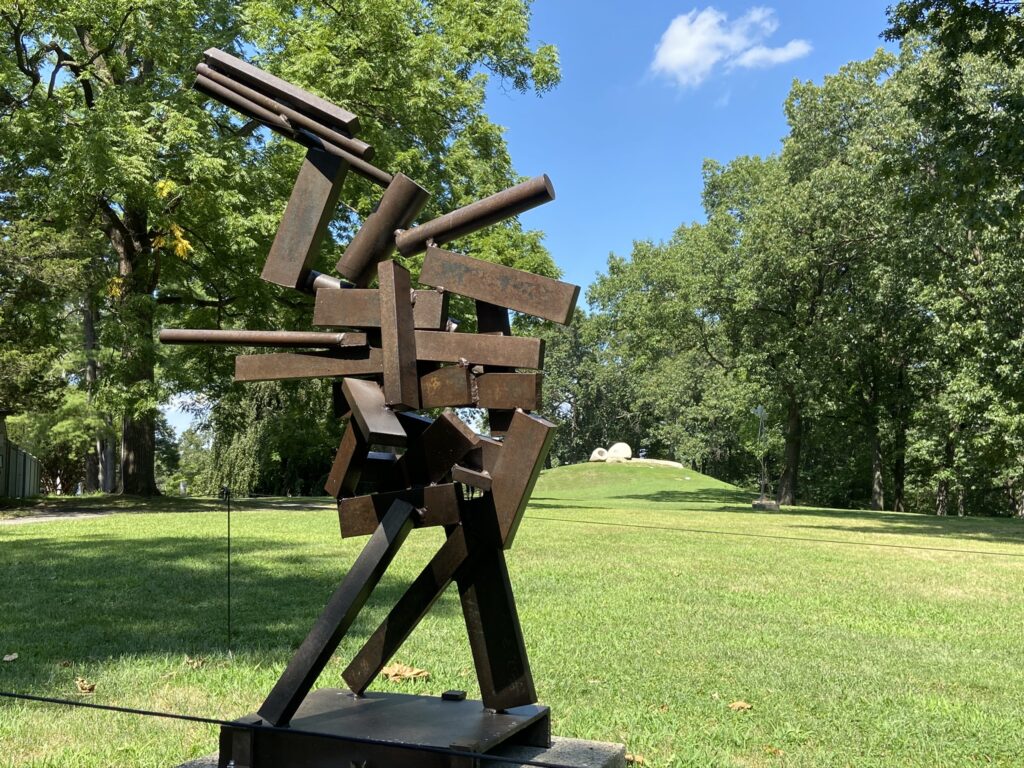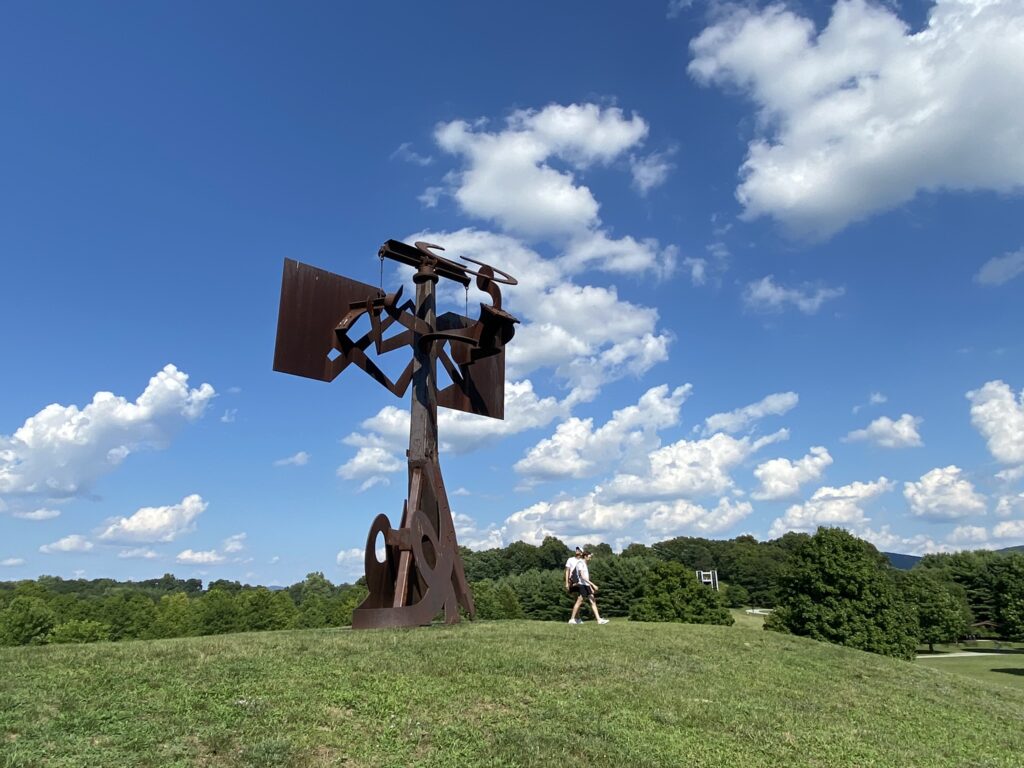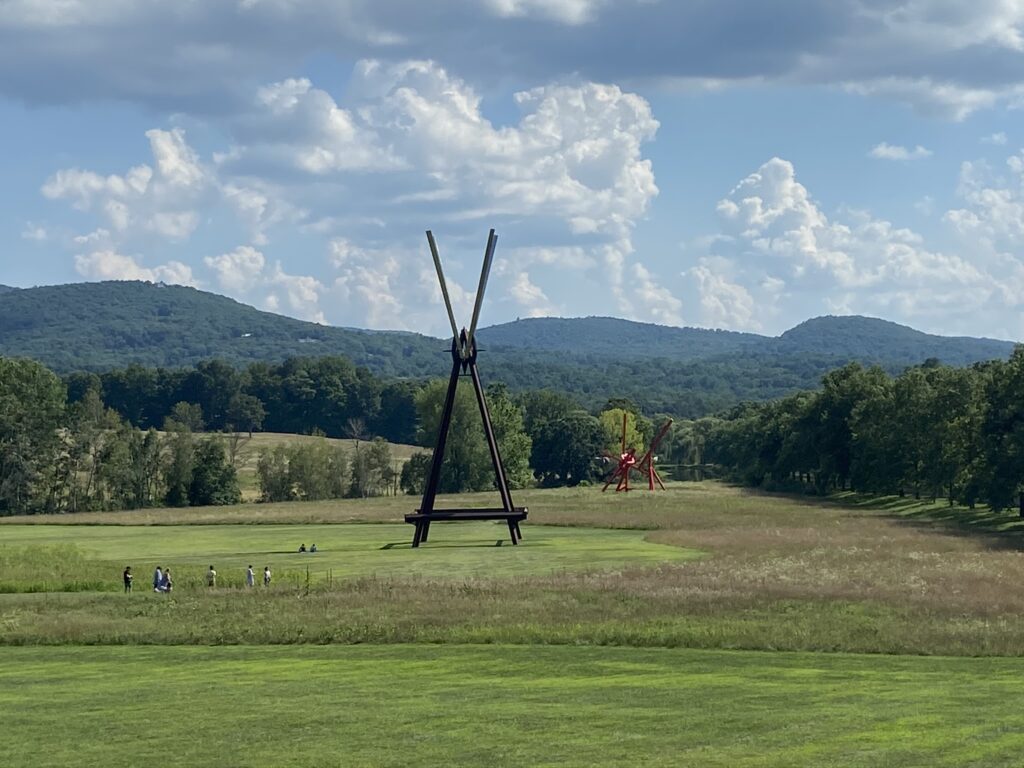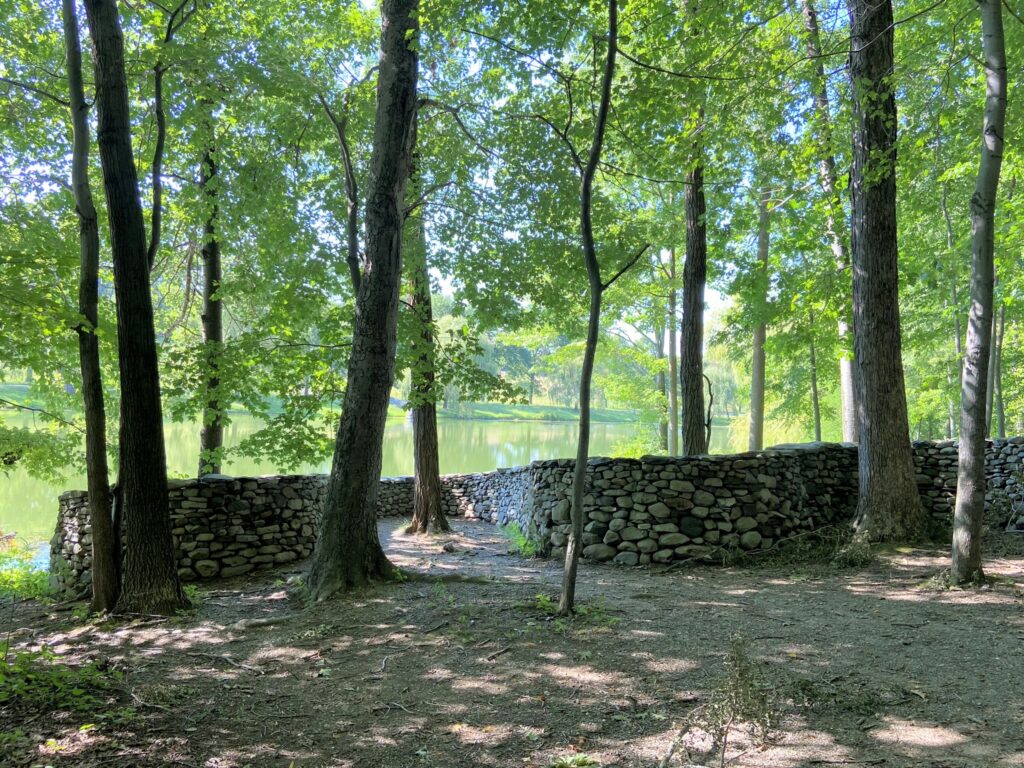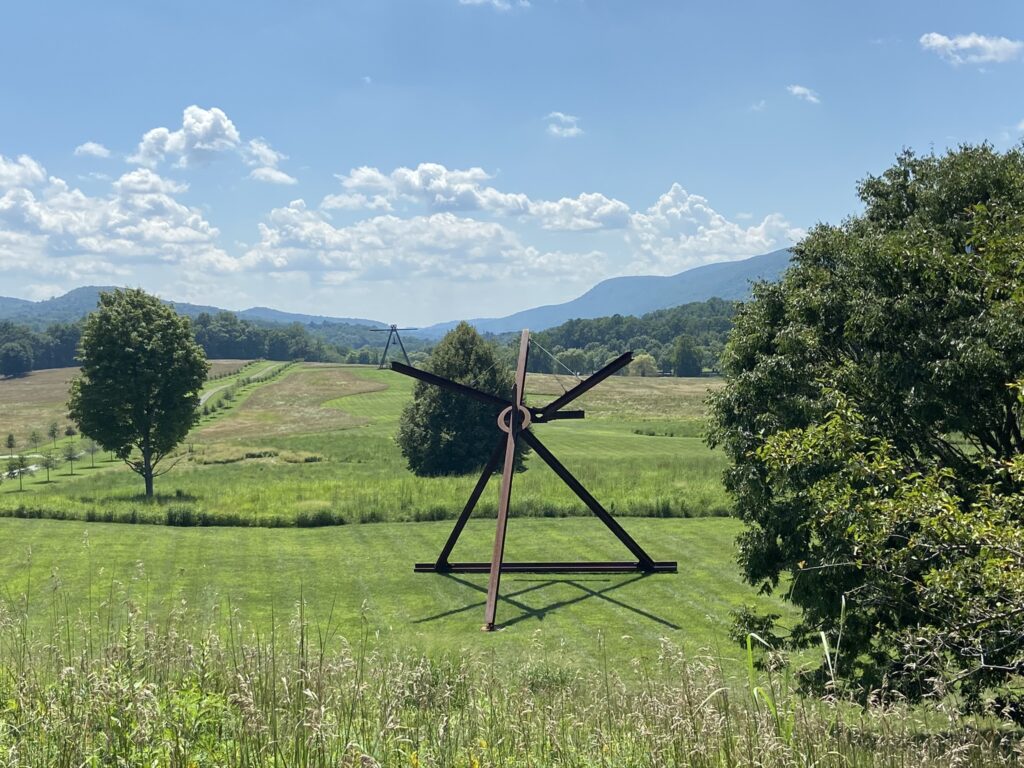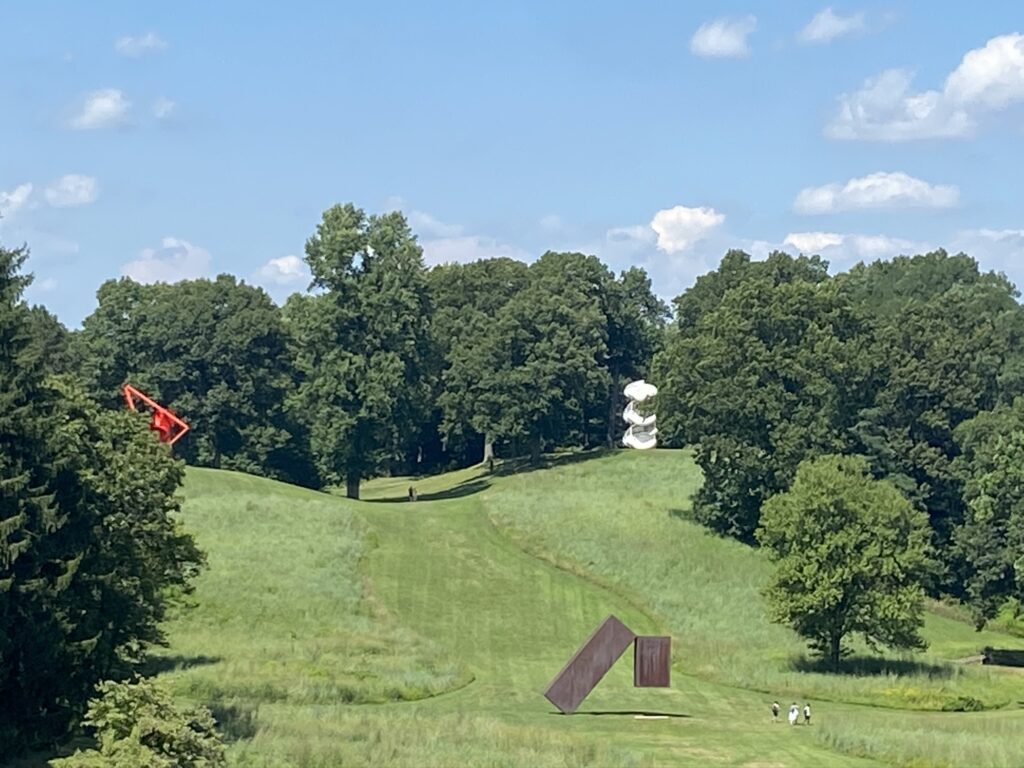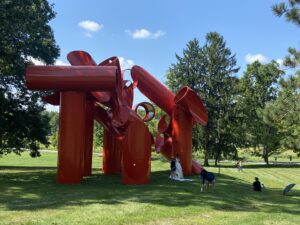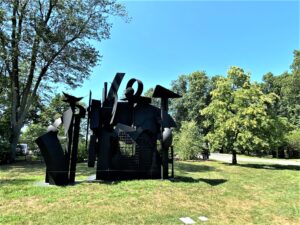A 500-acre, open-air sculpture park in New York’s Hudson Valley, Storm King Art Center is celebrating its 60th anniversary when its vision of supporting artists, art, and nature seems more relevant and urgent than ever. It has become famous internationally as a beautiful, ever-changing natural showcase for work by distinguished contemporary artists including Mark di Suvero and Maya Lin. At the same time, Storm King has embraced its role in its Hudson Valley community of Cornwall and beyond, offering classes, family programs, and artist residencies. Colorful foliage makes fall an ideal time to visit, though Storm King’s popularity means that online timed-ticket reservations (currently limited due to Covid-19 restrictions; open hours are shorter November–mid-December closing) must be made in advance.
Today the site, 50 miles north of New York City and near Storm King and Schunnemunk Mountains, is spectacular, but this was not the case when visionary businesspeople Ralph E. Ogden and H. Peter Stern established Storm King. Construction of the nearby New York State Thruway had ravaged a large part of the original 200 acres. It would take more than four decades to restore the landscape to its current state, including planting trees and native grass meadows. In the 1960s, Ralph E. Ogden purchased 2,300 acres on the east side of Schunnemunk Mountain to ensure that Storm King’s unique natural “viewshed” would be preserved; eventually this land became Schunnemunk State Park.
The founders planned a museum of Hudson River School painting, but by 1961 they realized that modern and contemporary sculpture, whether small or large in scale, would benefit from the open setting. Thirteen works purchased from the estate of the late David Smith in 1966 were the first to be placed directly in the landscape. Today Storm King showcases almost 100 works from its collection in the meadows and woods.
Seeing Storm King
Storm King is large: Walking from one end to the other can take 25 minutes, and several hours are needed to stroll the winding paths and take in heart-lifting views of the mountains and art. In summer, this can be a hot journey. (Check the website for information about bicycles.) Before a visit, it’s good to study a map and plan a route; the map has info about an audio guide. Below are a few highlights for a first visit, but Storm King is a place to return to spring through fall.
Museum Hill: Part of the original purchase, the chateau-like house on-site is now the Museum Building (currently closed due to Covid restrictions), with galleries for indoor exhibitions. The more than 20 or so sculptures nearby include works by David Smith, known for geometric, abstract expressionist sculptures created by welding pieces of steel and metal. Three works by Alexander Calder, among them the red metal Five Swords, are on the hill, with striking views of meadow and sky. Trees provide a backdrop for Louise Nevelson’s painted, black steel City on the High Mountain, which combines models from some earlier sculptures into a new work.
North Woods and Meadows: North and west of Museum Hill, these areas contain a variety of work in wooded and more open areas. The bold, red, tube-like shapes of Alexander Liberman’s Iliad seem to invite visitors to walk through the space. Surrounded by trees and visible from Museum Hill, Alice Aycock’s tall, curving, abstract Three-Fold Manifestation II is made of stainless steel and white-painted aluminum. The artist described this as resembling tipped “bowls or whirling, skewed spaces.”
South Fields: Storm King’s largest area displays some of its signature works in dramatic, open spaces sometimes backed by mountain views. Passing clouds, varying light, and the changing seasons mean these works always look different. On display are 10 monumental, abstract steel sculptures by Mark di Suvero, who has been associated with Storm King since 1969. Seen from afar or viewed up close, works such as his 90-foot-high E=MC² (on loan from the artist), Frog Legs, or Figolu encourage inspection and contemplation. Pop artist Roy Lichtenstein’s Mermaid is a painting on an actual boat that raced in the 1995 America’s Cup, but it looks perfectly at home by a pond at Storm King.
Two large-scale works commissioned by Storm King for their sites are at the southern end of the sculpture park. A former gravel pit is now the 11-acre Storm King Wavefield, an earthwork designed in 2007-2008 by Maya Lin, who worked with New York State Department of Environmental Conservation to reclaim the site. Gravel, topsoil, and grass create a hypnotic, wavelike shape, with Schunnemunk Mountain in the background. Andy Goldsworthy’s 2,278-foot-long Storm King Wall is a sinuous, hand-built, dry-stone wall that curves around trees and extends past a pond.
Storm King and Its Communities
Its popularity has enabled Storm King to expand support for education initiatives that help school and adult groups appreciate art and the site’s environment (most in-person programs are suspended due to Covid-19; check the website). These include partnerships with local organizations. Visits by underserved students from Title I schools have increased, and students from five counties in the Hudson Valley have free admission. Drop-in programs for children and families are offered on Sundays. Besides art-focused programs for adults such as sessions focusing on current exhibitions, Storm King offers outdoor concerts and other performance events like poetry readings. It also collaborates with area festivals.
Storm King is not static; it presents changing exhibitions by established and new artists. In addition, since 2015, Storm King and the Shandaken Projects have partnered to create a residency program so that artists (15 in 2019) can use private studios on Storm King’s grounds. The goal is to encourage experimentation and artistic production in many art forms, from writing to the visual arts.
Providing much-needed connection with nature and art, Storm King on its 60th anniversary continues to inspire with its commitment to community, art and artists, and the environment.
Side Dish
Storm King is perfect for picnicking, with several shaded areas of tables that offer views of art and the landscape. Bring your feast or preorder a box lunch from the café.
Linda Cabasin is a travel editor and writer who covered the globe at Fodor’s before taking up the freelance life. She’s a contributing editor at Fathom. Follow her on Instagram and Twitter at @lcabasin.

